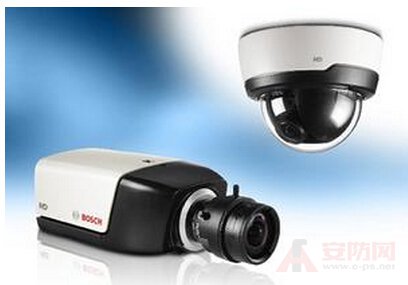This article China Security Network Xiaobian introduces the difference between IP cameras and industrial cameras:

NO.1, surveillance camera comparison: the controller is very different
The biggest difference between an ip camera and an industrial camera is the "who". Traditional video surveillance cameras are controlled and managed by professional managers, while industrial cameras are more focused on visual effects, and are controlled by the machine at a glance. The difference between a network camera and an industrial camera lies in the service and service objects. The former monitors uncertain environmental changes, and the latter monitors fixed product lines and changes from constant.
NO.2, image format and resolution
With image acquisition, the next step is to compare the image format and resolution. The ip camera image is compressed by data. According to different compression formats mjpeg, mpeg-4, h.264, images with different resolutions can be obtained. The higher the compression level, the clearer the imaging effect. It is worth noting that the high-efficiency compression method not only reduces the image. Storage space also reduces the burden on the network caused by the amount of data transferred.
The industrial camera uses triggered capture, because the image generated is the original bitmap format, which is convenient for later transmission to the image processing software for detailed analysis and comparison of the image. It is also possible to use the above acquisition mode in consideration of storage space issues.
NO.3, sensor (picture from new photography)
Is the industrial camera demanding high quality? I believe you will have such doubts. For a class of cameras that are not of interest, industrial device image acquisition is based on trigger signals to obtain single or continuous image information. In other words, the trigger signal capture image.
NO.4, image acquisition
An ip camera can record video information in multiple fields, and the video stream can continuously record image information. From the architectural point of view, the ccd/cmos sensor is used as the image acquisition device, and the soc chip for image processing and encoding is provided. This is the method used by the mainstream ipc to collect images.
NO.5, mobile detection alarm function: software upgrade and trigger alarm
Both surveillance cameras can be upgraded remotely. There is no small difference in handling alarms and managing systems. The ip camera supports motion detection to trigger an alarm and record the alarm information. Industrial-grade equipment focuses on the management of the system, and the vms platform can systematically manage camera control and data storage.
NO.6, monitoring video capture card: data transmission
Ipc relies on the network for data transmission, and Ethernet and data compression complement each other, borrowing enough bandwidth to transmit the necessary image data information. In an integrated server within the same network, multiple users are allowed to access image data information. Compared to industrial camera transmission, ip data transmission seems to be weak. Data transmission for industrial use requires Gigabit Ethernet, which can be transmitted using a usb connection, forming a point-to-point direct connection with the camera, which is equivalent to the speed of copying files from a USB flash drive from a computer.
The difference between the two is that the two different camera applications and the processed video information are different. Therefore, for the function of the two, there will naturally be differences. The ip camera can adapt to a wider range of applications and is a good way to handle light.
The ip camera lens aperture automatically senses changing weather and lighting conditions to adjust the camera to the optimal shooting state. The filter can reduce or eliminate the electrical components that harmonics affect the power system, allowing the camera to work properly and smoothly. Wide dynamic monitoring technology works in low illumination with the highest sensitivity in near-infrared light. Has high temperature resistance.
Industrial cameras are difficult to handle changing weather and light. These cameras require manual adjustment of the aperture, mostly black and white, and only support normal 0°C~50°C operation.
Zhoushan Jinsheng Bimetallic Plastic Machinery Factory , https://www.jinshenggalloy.com